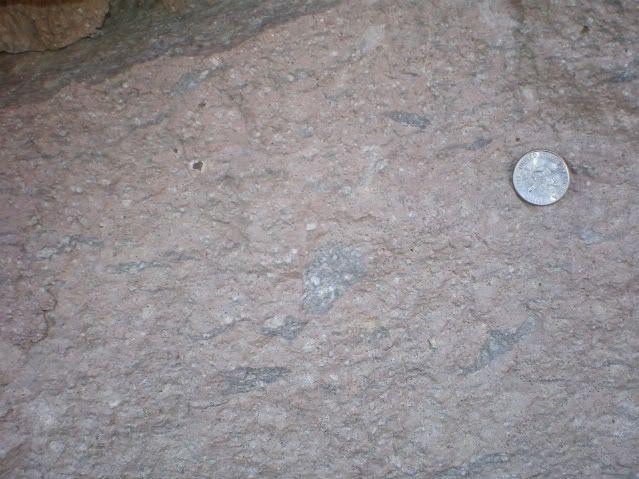To prime me for more thesis writing, I hereby bring you the second installment of my Interesting Igneous Image series.
This particular photo is of the densly-welded facies of the ~760 ka Bishop Tuff in the Owens River Gorge. Coin for scale. The stretched wispy dark-grey domains are collapsed pumice, sometimes called "fiamme," Italian for "flame." Fiamme occur when pressure from above and insulating heat within an advancing pyroclastic flow work to collapse the fragile bubble-walls of pumice fragments. Sometimes pyroclastic flow deposits display evidence of rheomorphic behaviour. A "rheomorphic tuff" can be found in the interior of some pyroclastic flows and are a result of being able to flow like coherent lava after being initially deposited as a hot, turbulent incoherent mixture of clasts, pumice and ash.
Here are some links relating to the Bishop Tuff (2 blogs and two research articles).
NOVA Geoblog, by Callan Bentley
Rhyolitic Magma Based on Melt and Magnetite Inclusions and Zoned Phenocrysts (Journal of Petrology article by Anderson et al., 1999)
Columns: Not just for basalt anymore Eruptions blog post by Erik Klemetti
Ring-fracture eruption of the Bishop Tuff (GSA Bulletin article by Hildreth and Mahood, 1986)
Enjoy and post remarks if you wish!
~Cole
Above photo (c) 2010 by Cole Kingsbury


No comments:
Post a Comment